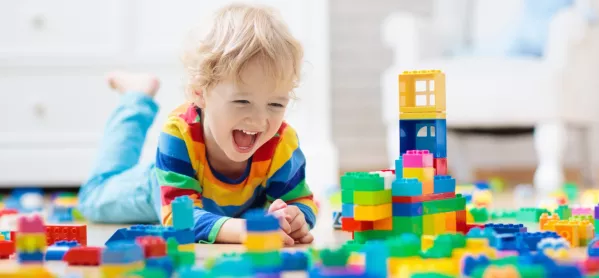Shape, space and measure (SSM) has been central to the debate around reforms to EYFS in the past 12 months, and there is a very good reason why those actually working in early years settings feel so strongly about it: we know that removing this area of maths would inevitably have a negative impact on learning in early years and beyond.
When we look at our data for SSM at baseline. It is always low and if we look at the reasons for this, you can clearly see its true value in the EYFS curriculum.
While it is easy to recognise that early number concepts are taught at home, do we believe children have the same opportunities to explore measuring, weighing and capacity as regularly as they do within their EYFS setting?
Numeracy in EYFS
In my experience, I’ve found that parents are regularly teaching number and counting, but it’s the SSM aspects that seem to get lost. I have found parents are willing and keen to ensure their children can count to 20, but will prioritise this over the shape and space aspects.
Sadly, the skills that we know are learned through practical things like baking - measuring ingredients, using mathematical language and being able to physically weigh and pour ingredients - seem to take less of a priority at home.
So it falls to us. As an early years teacher, I witness children really engaged in developing these skills every day: pouring different amounts of water in cylinders or jugs, they use mathematical language like “full, empty, light, heavy”, and they regularly weigh cooking ingredients.
Additionally, we see that SSM skills can be practised through construction play, building blocks and talk while making models and comparing sizes.
Building early maths abilities
Meanwhile, puzzles, shapes and construction activities taught outside through obstacle courses, treasure hunts and much more all allow children to develop their own spatial awareness - a skill that will undoubtedly have a positive impact on children’s learning and development.
If SSM is not a priority, if it is not front and centre of teaching in EYFS, then you can be sure of a negative impact on children’s mathematical understanding in the long term.
I know this because I also have experience as a key stage 1 teacher. I have found that when children struggle with the concept of shape, or measure, it is always necessary to go back to the practical.
For example, when teaching half, quarter or full in KS1, we revert back to practical activities with measuring cylinders and a water tray. Or unfolding a box to show the net.
I dread to think about how much more work would need to be done in KS1 if children were to miss SSM in EYFS.
Thankfully, when looking at the new proposals for the EYFS framework, it’s clear the decision has been to keep aspects of SSM. But it seems there is more focus on the end goal of KS1, rather than identifying the importance of teaching the foundations in EYFS. To me, that’s a real missed opportunity.
Sarah Hennessy is an early years teacher at St Thomas More’s Primary School in Hampshire

